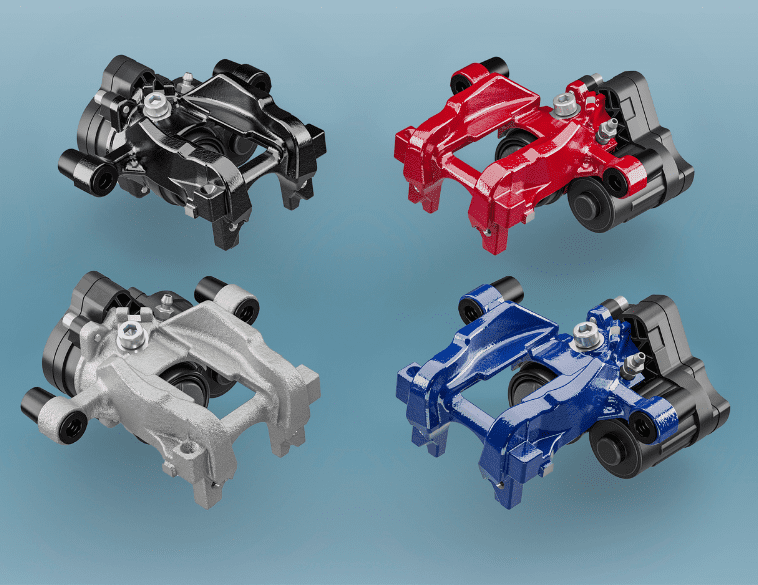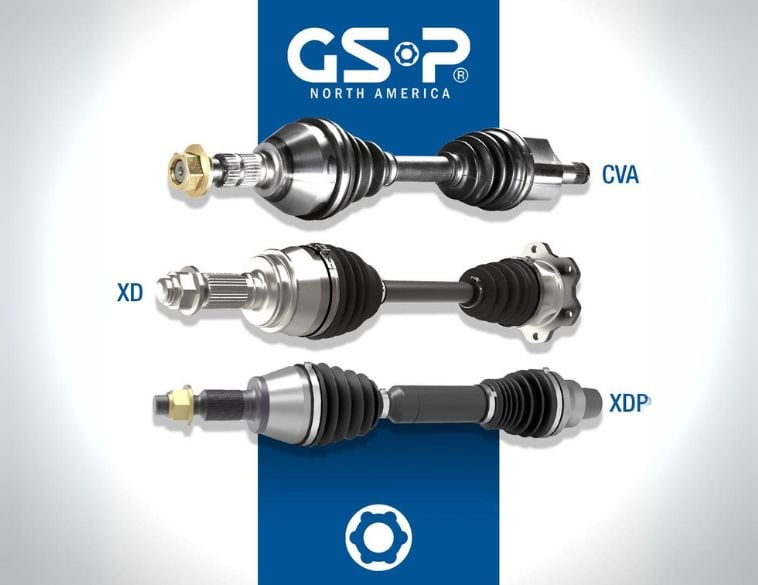Last time, Tom Stapor from NAPA Autotech guided us through some of the preliminary considerations when looking at vehicle brake system inspections.
Following on from the preliminary inspection and a road test of the vehicle to determine what might need attention, we began the brake inspection process by examining the level and condition of the brake fluid.
One thing Stapor mentions is that besides the condition of the fluid itself—has it been contaminated by oil or petroleum-based fluids—is the level of the moisture in the system. Moisture leads to corrosion and compromises the brake system’s ability to perform properly, yet it can be very difficult to test for.
Copper contamination
Additionally, most brake system components are normally made from iron or steel which has a certain amount of copper in it. Over time, this copper gets absorbed into the brake fluid, which will also impact the ability of the braking system to perform correctly. Excessive copper can result in galvanic corrosion, which causes pitting in aluminum components—something that can be very difficult to detect.
It’s a major reason why OEMs have recommended brake fluid service intervals and why, when a vehicle comes in the shop, the fluid should be examined and the OEM recommended service schedule followed.
Also, because modern vehicles feature anti-lock brakes, stability control and traction control systems, the performance of these can be compromised if the brake system isn’t operating correctly resulting in increased stopping distances and DTCs that have to be diagnosed, pinpointed and solved.
Stapor notes that brake fluid exchanges can be very profitable for service repair shops, as well as being a good tool in developing a preventative maintenance program with customers, so during the inspection, besides fluid condition and service interval recommendations, the technician should also check for leaks, as that will also mean air and moisture have gotten into the braking system, compromising its performance.
If any leaks are present, it is likely there will be corrosion and that parts will need to be replaced. For example, notes Stapor, if the brake master cylinder is leaking and there are signs of corrosion on the face of the brake booster, chances are the brake booster will need to be replaced as well.
Corroded brake lines
On vehicles that are driven in salt and slushy winter conditions, like much of Canada, brake lines and fittings are far more susceptible to corrosion, and so inspecting them carefully should be of paramount importance. The lines can corrode and become porous, causing fluid to seep out and moisture to enter the brake system.
If one corroded brake line is found then all of them will need to replaced; since if one is bad, it is only a matter of time before the others fail. This is why Stapor says, if the technician finds a corroded brake line, the customer should be provided with a quote to replace all of them at the same time. And this might mean the entire brake lines running from the master cylinder to the hydraulic control unit, to the ABS module and to all four wheels, so it’s something to bear in mind.
On rear-wheel-drive vehicles, such as pickup trucks and traditional style SUVs, as well as some passenger cars, leaking axle seals can also pose a problem. In some cases, leaking fluid from the axle seals can contaminate the rear brake drum assembly which will ruin the friction and rubber components, resulting in a costly repair for the customer.
Inspecting rubber hoses should also be a top priority as they often get overlooked. Stapor notes that there are often cases when technicians work on the vehicle to replace front brake pads and they leave the calliper hanging, with the hose absorbing the weight. This can easily become a safety issue where the hoses fail during a hard-panic stop. Any signs of cracking stretching, or kinking mean the hoses should be replaced.
Bleeder screws
Bleeder screws are another key part of the brake inspection. Designed to keep dirt and moisture out of the brake system, bleeder screws should be loosened any time the brake fluid is exchanged.
Stapor says that some technicians try to avoid opening the bleeder screws to save time, but because the brake fluid travels down from the master cylinder and to the brake callipers and drums, not only is it hard to push the pistons back when servicing the brake callipers, any debris in the brake system, gets pushed back up to the master cylinder which can damage the cup seals and block the compensation port. This means each time you put a set of brakes on the vehicle, they wear out more and more quickly and the customer blames the shop for installing cheap, economy parts.
Also, on vehicles equipped with ABS, debris can wind up in the hydraulic control unit causing a malfunction with the ABS system.
“These are problems that we cause by not opening the bleeder screws,” says Stapor. “That is why it is critical to open the bleeder screws for each and every brake inspection we do as well as doing a brake service.”
Drum and disc assemblies
Other key areas Stapor says technicians should focus on include examining the condition of the brake drum assemblies including the wheel cylinders, return springs and friction material. Any signs of corrosion, or heat, or tapering on the brake shoe friction material are indicators that new parts are needed.
For disc brakes, checking the condition of the rotors and looking for signs of heat damage, scoring and uneven wear are also prime considerations.
A very common problem on most vehicles today concerns brake pulsation. Many people attribute that to warped brake rotors when in reality the issue is caused by the uneven thickness of the rotor surface which can be attributed either to a lower quality rotor being stalled, the rotor not being mounted correctly, the hub assembly not being cleaned properly and/or worn brake callipers which aren’t able to properly adjust.
Incorrect torquing of the wheel hub assembly is another common problem that results in brake pulsation.
In some cases, Stapor says that a technician might put on a new rotor but they didn’t replace or clean the hub assembly. The result means that the rotors wear unevenly and the issue is so gradual that a customer may not even be aware of it for 2-3 years, by which time they have likely sold the vehicle, so it can be very difficult for shops to pinpoint the problem.



